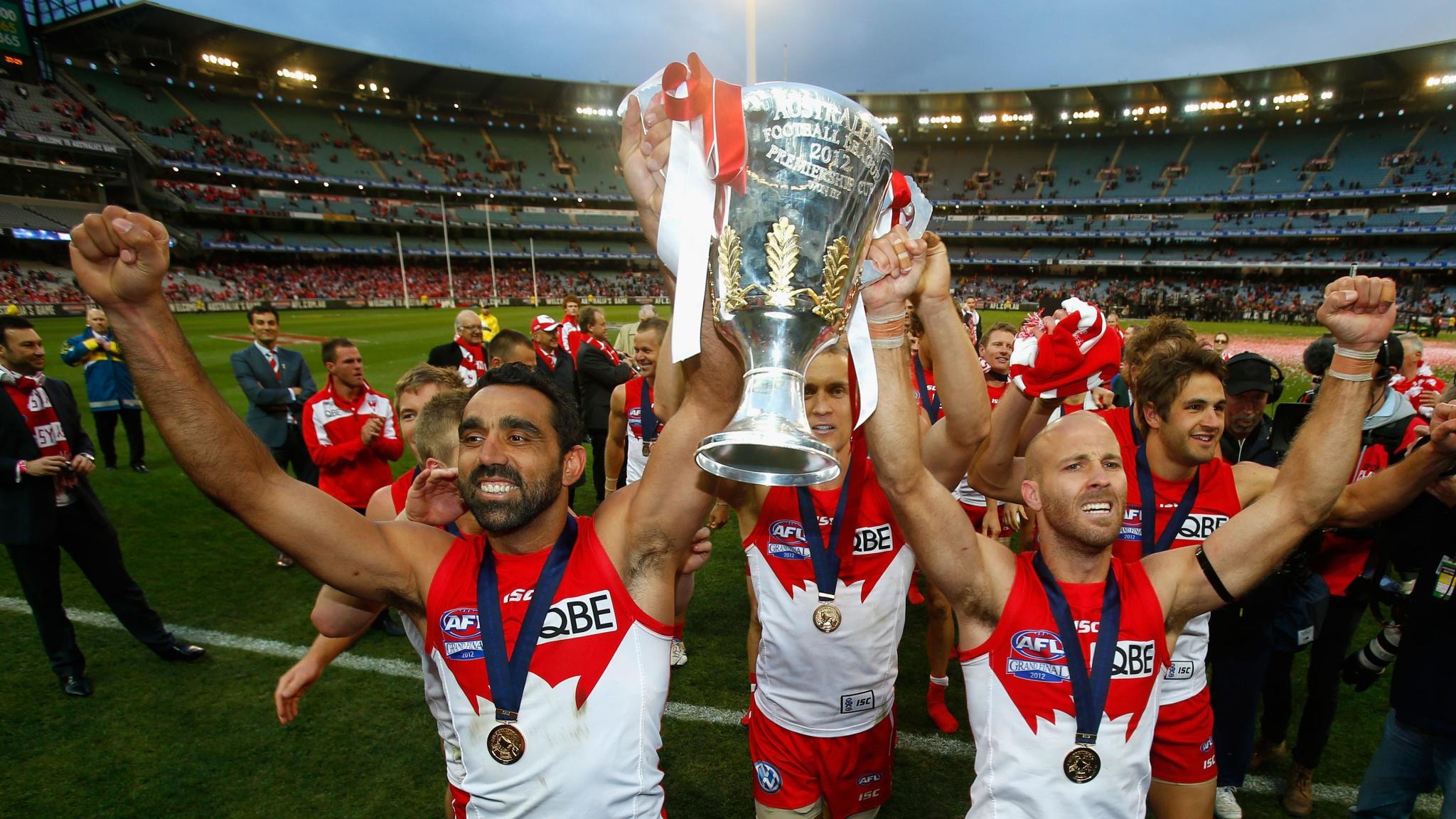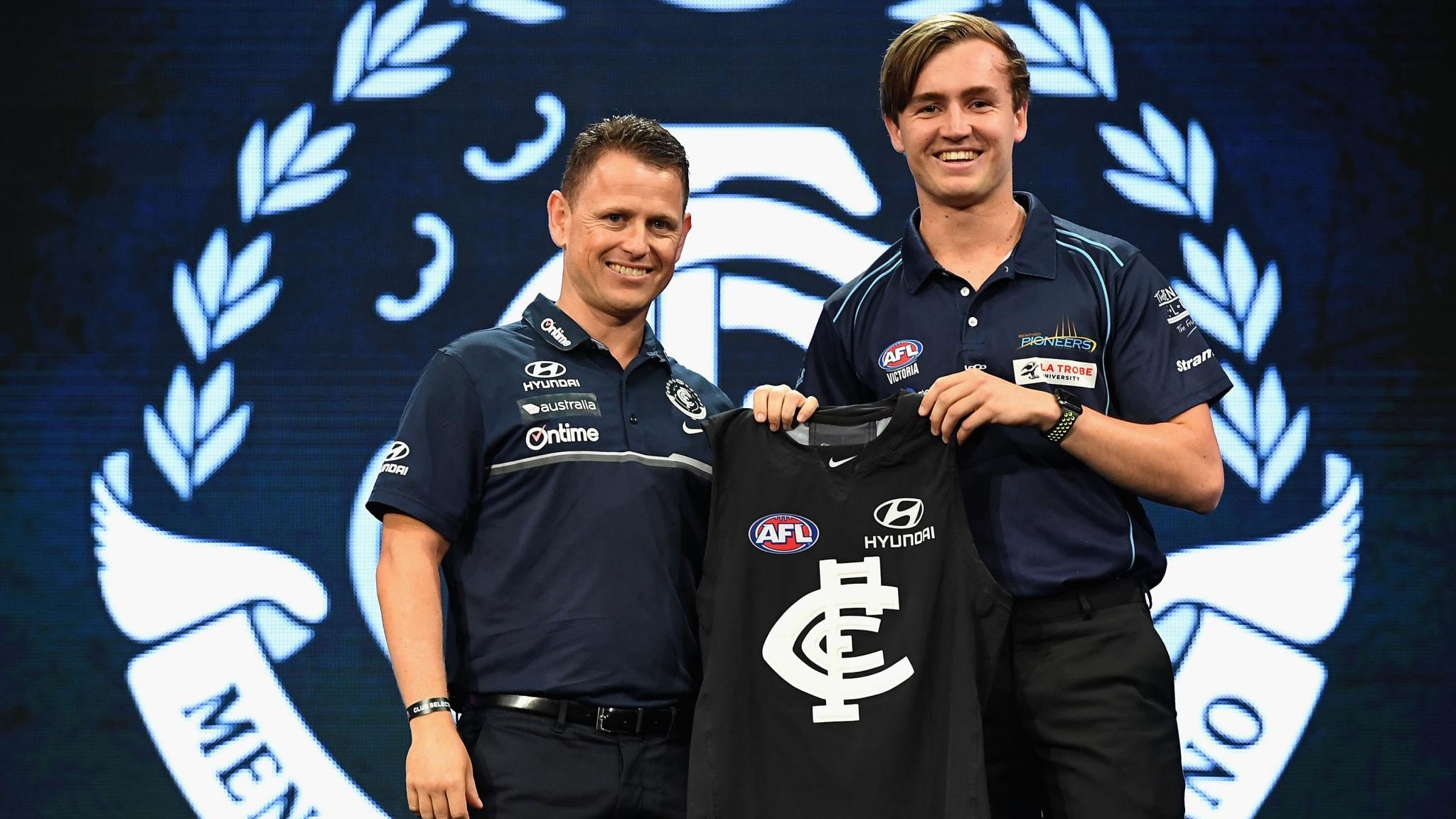Carlton and Brisbane are winless. St Kilda, which unveiled a plan in 2014 to finish in the top four this year and win a flag by 2020, sits one place above them with one victory from six tries. All took steps to reinvigorate their list with an eye on the future, but without any guarantee it would work. AFL.com.au looks at how two of the most successful clubs – Sydney and Hawthorn – have gone about this onerous task.
THERE was a time, believe it or not, when even Hawthorn was awful.
Every AFL team has missed the finals at least three times since the turn of the century, but it's the way they've climbed, or more accurately, how quickly, that sets them apart.
Sydney's effort to finish outside the top eight on only three occasions places it at the top, from Greater Western Sydney (four), Geelong (five) and the Hawks and Adelaide (six each).
The Giants, of course, entered the competition in 2012.
The Swans are also one of just four clubs to win multiple premierships in that span, with their 2005 and 2012 flags placing them in elite company.
Sydney has been a model of sustained success. Picture: AFL Photos
Hawthorn (four) and Geelong and Brisbane (both three) are the others.
It's no wonder Sydney and the Hawks became pin-ups for remaining relevant in spite of the AFL's equality measures, while the Cats have been similarly reliable.
But rebuilding, refurnishing, renovating, recalibrating, re-stumping, rewiring or re-plumbing – whatever you want to call it, Ross Lyon – is a complex mission for most sides.
"It's completely farcical that anyone out there has this magical blueprint for success," the Swans' 2005 premiership coach Paul Roos told AFL.com.au, "where you go down the bottom of the ladder for three, four or five years then suddenly you become a premiership team.
"I'm not unsupportive of a team, in going through the process, finding itself in 14th, 15th, 16th or 17th. That's not catastrophic, but only if it's done correctly.
"Then you will rebound in three years instead of six. But if you strategically go down the bottom and think you will automatically come back up the top, that's when I think it's flawed."
Alastair Clarkson's arrival at Waverley Park at the end of 2004 paved the way for a new thought process on rebuilding that rivals have since tried themselves with varying results.
The 'Hawk-print' was to initially hit the draft hard, make as many of their picks count, then draft and trade strategically – including offloading high selections – once the premiership window opened.
Alastair Clarkson benefited from savvy drafting early in his time at Hawthorn. Picture: AFL Photos
Free agency later became a way for them to stay ahead of the pack.
Hawthorn had 10 top-30 selections, including five single-digit choices and a pair of priority picks, in Clarkson's first two summers in charge in 2004 and 2005 so they could afford to whiff on some.
You could almost argue that the November draft period was the Hawks' Grand Final in those years, to borrow a line from a recent Clarkson media conference.
There were significant misses, with none of Beau Dowler (pick six in 2005), Beau Muston (22, 2005) or Mitch Thorp (six, 2006) playing 20 games for the club.
Xavier Ellis (three, 2005) didn't reach 100 at the Hawks, either, but two of his matches were Grand Finals, including the 2008 premiership, and repeated injuries were a genuine excuse.
But, boy, did they get it right a lot.
HOW THE HAWK DYNASTY WAS BUILT
At the draft between 2004 and 2007
PLAYER | YEAR | DRAFT TYPE | DRAFT PICK | HAWKS GAMES | FLAGS |
Jarryd Roughead | 2004 | National | 2 | 258 | 4 |
Lance Franklin | 2004 | National | 5 | 182 | 2 |
Jordan Lewis | 2004 | National | 7 | 264 | 4 |
Clinton Young | 2004 | Rookie | 18 | 116 | 1 |
Xavier Ellis | 2005 | National | 3 | 86 | 1 |
Grant Birchall | 2005 | National | 14 | 245 | 4 |
Max Bailey | 2005 | National | 18 | 43 | 1 |
Stephen Gilham | 2005 | Rookie | 34 | 98 | 1 |
Brent Guerra | 2005 | Pre-season | 3 | 159 | 2 |
Brent Renouf | 2006 | National | 24 | 52 | 1 |
Cyril Rioli | 2007 | National | 12 | 189 | 4 |
Stuart Dew | 2007 | National | 45 | 26 | 1 |
- Games as of round six, 2018
This table sums up Hawthorn's model quite well: meshing top-end talent with recycled players and others who filled roles (it's easy to forget the Hawks' defensive and ruck shortcomings back then).
A closer inspection of the Hawks' 2005 playing list, in Clarkson's first season in charge, illustrates the experience that helped foster the next wave of talent.
Shane Crawford, Richie Vandenberg, Trent Croad, Peter Everitt, Ben Dixon and Joel Smith provided leadership, while Luke Hodge, Sam Mitchell, Campbell Brown and Brad Sewell were already two-plus years into their careers.
The blossoming relationship with Tasmania, first struck in 2001, also helped Hawthorn transform its once-flagging financial fortunes, which in turn had a flow-on effect on the ground.
Rodney Eade, a four-time Hawks premiership star who coached Sydney to the 1996 Grand Final and the Western Bulldogs to three preliminary finals, said Hawthorn's success was all in the "execution".
"I keep going back to the Hawthorn model. They went to the draft, they had a plan and they executed it," Eade told AFL.com.au.
"I think any plan can work, but it's the execution of the plan.
"Sydney haven't been able to get (many) players from other clubs, because they can't afford to … so what they've done extremely well is with their rookie-listed players.
"Because they haven't had early draft picks, people say, 'Well, it's not the draft'. Well, it is the draft, but they've drafted extremely well and the development of their players is excellent."
SWANS' BEST ROOKIES SINCE 2000
PLAYER | GAMES | GRAND FINALS | FLAGS |
Heath Grundy | 243 | 3 | 1 |
Kieren Jack | 235 | 3 | 1 |
Nick Smith | 197 | 3 | 1 |
Paul Bevan | 129 | 1 | 1 |
Dane Rampe | 121 | 2 | 0 |
Mike Pyke | 110 | 2 | 1 |
Jake Lloyd | 98 | 2 | 0 |
Harry Cunningham | 87 | 1 | 0 |
Tom Papley | 46 | 1 | 0 |
Sam Naismith | 28 | 1 | 0 |
The Swans have traditionally gone hard at a few targeted players, such as Lance Franklin, Kurt Tippett and Shane Mumford, rather than recruited in bulk from other clubs.
Eade's comment about their lack of money was a reference to the high living expenses in the Harbour City, and the AFL no longer awards Sydney or GWS a cost of living allowance (COLA).
The introduction of club-based academies for New South Wales and Queensland clubs helped the Swans' cause, most notably in delivering Isaac Heeney and Callum Mills and now Nick Blakey.
Melbourne has a wildly contrasting modern history to Sydney.
The Demons last played a final in 2006 – the competition's longest drought without playing in September, as well as being seven coaches ago – but their latest plan appears to finally be paying dividends.
Melbourne, too, loaded up on draft picks, used free agency rules to its advantage – turning James Frawley and Colin Sylvia's exits into positives – and second-round selections to lure established talent.
Most recently, the Demons traded two first-round choices for wantaway Adelaide defender Jake Lever as they enter the new phase of their climb back to relevance.
The jury is still out on Carlton's approach of making 42 list changes – involving 40 players – in three off-seasons under coach Brendon Bolton.
The Blues tell us the carnage is likely to end there, with far less turnover forecast for the 2018 post-season, as attention turns to establishing "cohesion" and "synergy" in the playing group.
Carlton picked up Lochie O'Brien with a first-round choice supplied from trading Bryce Gibbs. Picture: AFL Photos
Bolton's wins by season are seven, six and zero (through six rounds), but Roos has repeatedly stated this is only one factor in tracking a side's progression.
Brisbane is also trying to dig itself out of a deep hole.
The Lions are the only club to score a priority pick, in 2016, since the system changed six years ago, and Eade sees "light at the end of the tunnel" for Chris Fagan's side despite the on-field results.
St Kilda is in that awkward stage where, history suggests, if teams don't return to finals within a particular period – one basic way of judging a successful rebuild – they are typically forced to start again.
The Saints, according to their former football boss Chris Pelchen, had major salary cap issues when he went there in 2011 and suffered some pain while fixing the problems.
They were paying their top 10 players about 63 per cent of the cap and lost stars Brendon Goddard (2012) and Nick Dal Santo (2013), perhaps as a consequence, to other clubs as their rebuild kicked into gear.
These sorts of variables can explain why one rebuild takes longer than another or ultimately fails, according to Eade.
The Blues, for example, lost Sam Docherty (knee) for the year before the 2018 season began and have been without Marc Murphy and Matthew Kreuzer for multiple matches.
They also granted Bryce Gibbs his wish to return to South Australia in a deal with Adelaide that awarded them multiple draft picks last year – one used to select Lochie O'Brien at No.10 – and saw the clubs swap 2018 second-round choices.
"Footy is so difficult and there are so many variables that can upset the apple cart, so you have to take each case on its merit," Eade said.
"You hope the people making decisions take that into account, but unfortunately it's quite an emotional game, and people make decisions based on reactive supporters and media."


